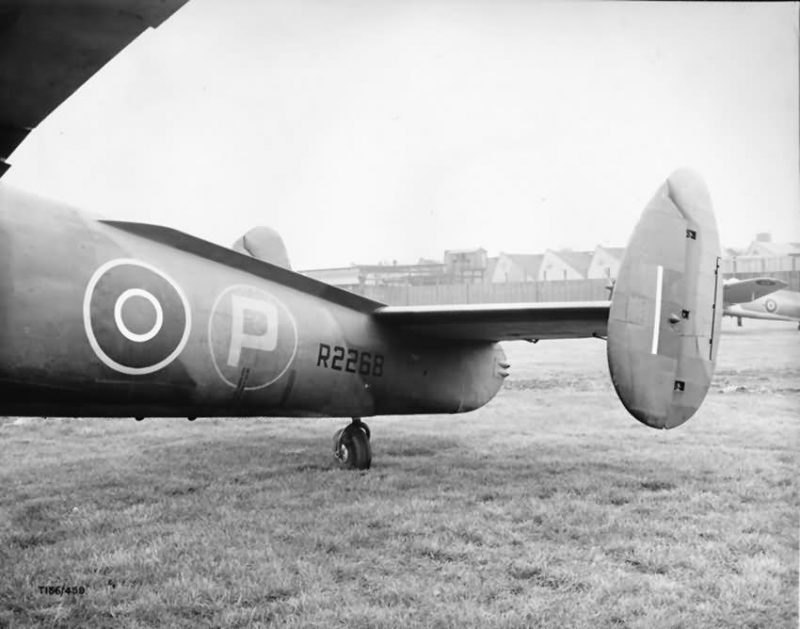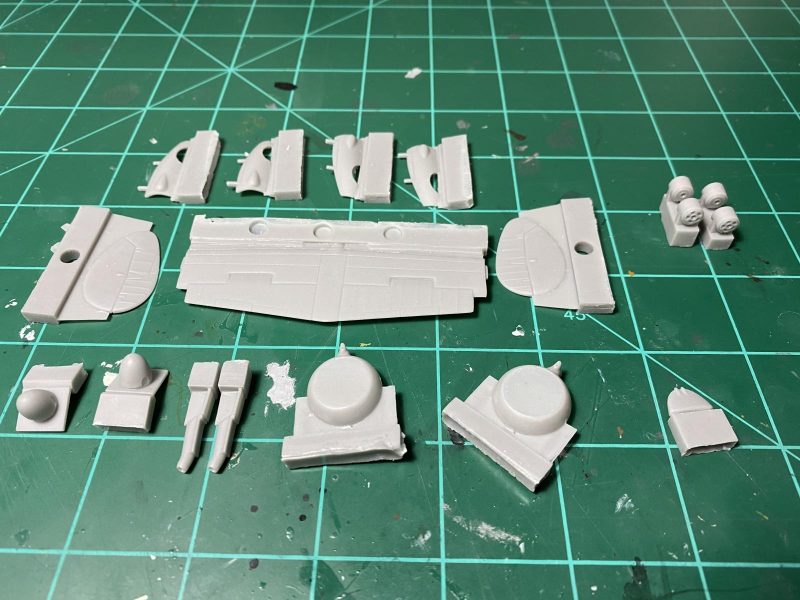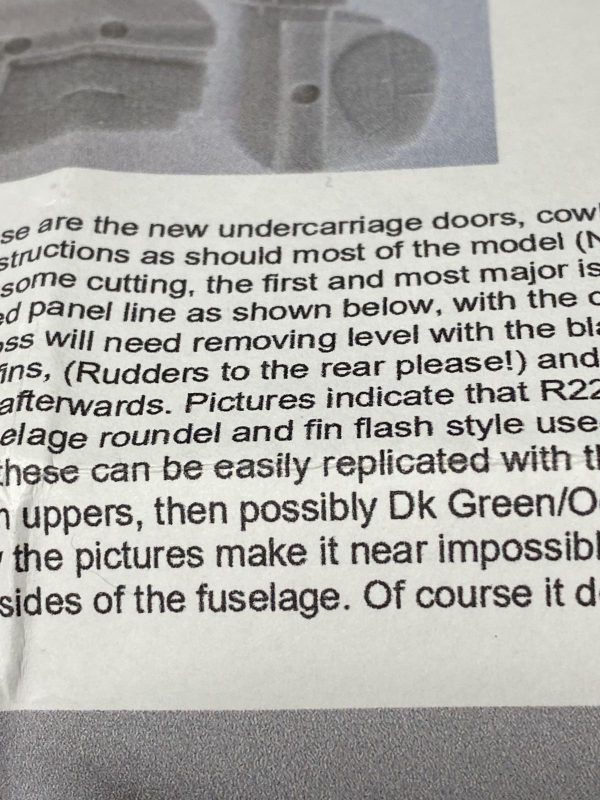After just finishing several kits that were a little more demanding than I wanted, I really wanted to build something fun. I like to build things that are a little unusual in some way, which led me to a 1/72 resin conversion from Alley Cat Models in Great Britain for a twin-tail Beaufighter.
Here is the background:
Putting more than one engine on a plane is a case of "good news" and "bad news". The good news is that you may get additional power, lift, airspeed, and so on. But the bad news is that an engine loss may lead to yaw and stability problems, especially if the engines are on the wings. When a twin-engine plane loses an engine, it immediately yaws into the dead engine. The directional control problems following an engine loss tend to be more severe the farther the engines are from the center-line. Uncorrected this yaw can lead to some rather severe problems, including loss of altitude, loss of aircraft control, death, destruction (you get the picture). The good news is that you can control this yaw and rolling tendency using the rudder and elevators. As any pilot of twin-engine aircraft will tell you, the worst time to lose an engine is when you are low and slow, such as during takeoff. At low airspeeds, the airflow over the rudder and elevators is very low, which significantly reduces their effectiveness. Because of this, engineers design the tails of twin-engine airplanes to provide sufficient control during an engine loss at low airspeeds.
Well, now our story shifts to the Beaufighter, which for some reason was already in production when it was discovered it had marginal longitudinal stability and poor handling characteristics following an engine loss at low airspeed. Engineers determined that a twin-tail configuration would fix the problem, so aircraft R2268 was taken off the assembly line and fitted with a twin-tail. Testing showed that this configuration would provide adequate control during a low speed engine loss, but retrofitting the existing airframes would be a difficult and extensive retrofit. Searching for a more cost-effective solution, engineers discovered that they could get the same result by increasing the area of the tailplane by 20% and adding 12 degrees of dihedral to the horizontal tail surfaces. This solution was a lot easier and more cost effective, so it was implemented on all previous and included on all newly-built aircraft.
-

1. This strake was added late in the testing.
The Conversion:
This conversion from Alley Cat Models is designed for the "new" Airfix 1/72 Beaufighter TF.X. It is advertised as requiring a "minimum" of cutting and fitting, and indeed, the only thing you need to cut is a small section on the aft end of the fuselage. Alley Cat thoughtfully designed the surgery to occur at a panel line, so it should be fairly simple to do. The rest of the parts are designed to be "plug and play" replacements for the kit parts. In addition to the horizontal stabilizers and the twin tails, the new parts include wheel hubs, main landing gear doors, engine exhaust collectors and exhausts, prop spinners, and a few other parts. Decals include the new registration numbers and the prototype "P" for the fuselage.
-

1. Parts seem to be detailed and well-made.
The instructions gave me more than a giggle or two. At one point they admonish you to please assemble the tails with the rudders toward the rear. The painting instructions are also fun. They first say that the plane carried markings typical of the time period. Cool, whatever that means. They next tell you that all of the photos of the plane are in black and white, so the camouflage colors are guesswork. They say that the camouflage could be Dark Brown and Dark Green, but could be Dark Grey and Dark Green. They say it is also possible it is two-tone gray (I guess it could be a plane going to Coastal Command or Fleet Air Arm). For the belly of the plane, they say it could be gray, or it could be Sky, or it could be in yellow for testing. Basically, I think you can paint it almost any way you wish.
-

I am looking forward to this build. I have heard that this Airfix Beaufighter is a straight-forward build that results in a good-looking model. I also think I have some Eduard masks and photoetch lurking somewhere that I can use for this kit. More to come.
Everyone stay safe. Cheers.